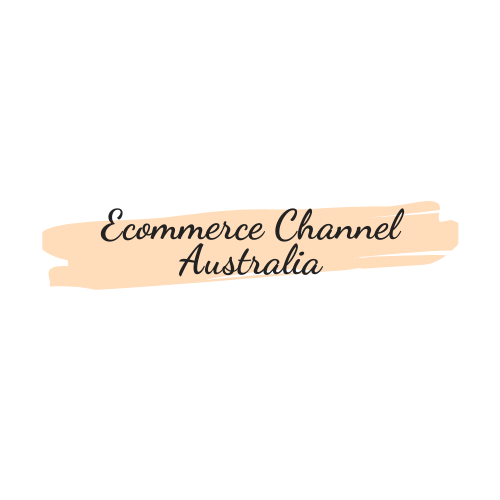Many online businesses are focusing on improving customer experience. Merchants need to optimize their eCommerce stores for customers at all stages of the eCommerce customer journey, as frictionless shopping becomes more popular.
This term is not well-known. A poor user interface can lead to lost customers. Are you seeing an increase in abandoned carts? Do you want to increase your number of customers who pay for your services? This blog is for YOU!
What is the eCommerce Customer Journey?
The “eCommerce customer experience” refers to the many stages customers go through when they interact with an online shop. This includes the point at which the person first became aware of the brand’s products or services, and the moment they check out and place their order. From the moment customers first discover a brand, all interactions with them will determine whether they shop on the site or make a purchase.
Potential customers will leave a website if they experience slow speeds, poor user interfaces, too many forms, and other inconveniences. Prospective customers are motivated to convert so it is important to offer a seamless shopping experience. Visitors will be more satisfied if there are elements such as a fast site speed, quick page load times and clear product descriptions. Online shoppers will be happier and more likely to spend their money if there are fewer obstacles before they checkout.
You don’t know where to begin? An inbound market strategy will help you invite customers to your site and encourage them to buy. Let’s talk about the importance of mapping your eCommerce customer journey, beginning to end, before you start to implement this strategy.
The eCommerce Customer Journey Map
Customer experience mapping is a process that outlines each stage of the buyer’s journey and identifies instances where customers face obstacles. It also acknowledges any emotions the shoppers may have at each stage. Customer experience mapping is an essential component of accelerating customers’ journey to purchase .
The graphic below gives a brief overview of the five stages of customer lifecycle.
The Global Awarded Magento POS – 2021 Stevie Awards Product Innovation winner provides you with a powerful Magento POS as well as 24/7 support. Other products : Shopify Pos, Bigcommerce Pos, Woocommerce Pos, Firearms pos, south africa pos
Phase 1: Discovery & Awareness
The first step to mapping the customer experience is the Discovery and Awareness phase. This phase is where the customer discovers the brand’s existence and is informed about the offerings. This phase includes touchpoints such as word of mouth, paid or organic social media, search engines and apps, or any other avenue where potential customers may discover a brand.
Potential Friction Point: Generic (& Unlimited) Emails
Today’s consumer is bombarded daily with marketing emails from many brands. If you are anything like me, you don’t like opening emails with generic messages that have little to no connection to your interests or your past purchases. Many retailers continue to send emails blasts to their entire list, which can cause many subscribers to unsubscribe and possibly never return to the brand’s website again.
Solution
Instead of being the brand that bombards its subscribers with generic emails, create buyer personas. Then, use audience segmentation to divide a large list into different groups or segments. This will allow you to reach people who actually care and exclude people who don’t want the offer.
To personalize your email marketing strategy, make sure to use interesting subject lines and recommend products. To personalize your contacts’ data, you’ll need an email marketing program, such as HubSpot and Klaviyo. This is useful if you wish to include their first names in an email, or segment the recipient lists based on behavioral data.
Phase 2: Education and Consideration
The second phase of the eCommerce customer journey has seen potential customers identify that a brand can solve a problem. Potential customers have identified that a brand may be able to meet their needs but haven’t yet decided where they will purchase from. This phase includes comparing brands and researching the best possible solution. This phase includes touchpoints such as retargeting ads and reviews on Google or any other review site, product pages and promotional emails.
Potential Friction Point: Inadequacy of Product Details
We’ve seen it happen 15 times in our 15 years of experience as an eCommerce agency. While it is great to have product photography on product detail pages of products, photography alone won’t always sell. To educate potential buyers about a product, additional content must be included around it. Buyers can learn more about the product by visiting product detail pages. This information will also increase buyer confidence and help ease nerves before making a purchase.
Solution
It is essential to optimize product pages to create a seamless customer experience. If applicable, include detailed product descriptions, multiple images, size guides, materials and product specifications. You can also add reviews from customers who have purchased that product.
Phase 3: Acquisition & Purchase
The Conversion phase is when potential customers become real customers. It’s also called the Purchase and Acquisition phase. They made a decision on the product they want to purchase and then proceeded with the purchase. This phase includes adding products to their shopping cart, entering a discount code, paying with a credit/debit or other payment method, and receiving confirmation with an order reception.
Potential Friction Point: Account sign up required for purchase
Once a customer is ready for checkout, they are committed to making the purchase. If brands ask customers to sign in to their accounts to complete the purchase, this distracts them from entering their credit card information quickly and completing the checkout.
Solution
If possible, avoid presenting additional information before checkout. Instead of creating an account, let customers use guest checkout instead. It’s better to have a single-page checkout because it eliminates distractions and provides a seamless commerce experience.
Phase 4: Post-purchase Engagement & Retention
After customers have received their order, this phase focuses on them. This phase focuses on the customer’s satisfaction with the purchase. Customer service or support team may send marketing emails asking for feedback and reviewing the product. Support emails could also include lists and/or guidelines on how to return and what to do if the refund policy is not followed. You can also interact with customers by opening emails, subscribing for customer-only bonuses, upsells, and reading articles.
Potential Friction Point: Customers who are not satisfied after purchase
Businesses must accept that people will sometimes nitpick small details and not be 100% happy with orders. Despite eCommerce businesses striving for seamless experiences, there will always be a bump in the road. There are many reasons customers may be unhappy, including delayed shipping and no longer using the product.
Solution
Customers should be fully informed about product details, shopping cart pages and checkout pages. Customers should be informed if shipping delays are a concern by your company before they buy the product. Customers should be informed if the product’s colors differ from the photos shown. Each product is handcrafted and can fade in the washer. Your company’s refund and return policies should be clearly stated on your website. This will ensure that customers don’t have to wonder about it when they need it. Management may send customers an email with a promo code or digital gift certificate to help them save money on their next purchase.
Phase 5: Advocacy and Brand Loyalty
Customers are happy with the product/service they have purchased and post about it on social media, refer it to friends, and create their own user generated content. This is the final stage in the eCommerce customer journey. This stage includes positive word-of mouth marketing, organic and paid social content, referrals, and positive reviews.
Potential friction point: Customer loyalty program doesn’t feel “worth it”
Retaining existing customers is much more cost-effective than attracting new customers. It can be difficult to build brand loyalty and keep customers who have purchased in the past. Customers may feel that the loyalty program is not worth their time. Credits don’t add up to other customers and points expire too quickly. Customers don’t feel valued individually. eCommerce businesses must improve their customer service when customers feel this way.
Solution
Make customers feel part of your brand’s family by creating a customer loyalty program. Earned points can be used to convert first-time customers to loyal brand advocates. However, this will depend on the business. Brands don’t have to spend a lot of money to make customers feel valued. Customers are the most important members of your audience, not prospects or leads.
Conclusion
Understanding the eCommerce customer journey is key to converting website traffic into customers. Although the friction points involved in the customer journey may vary from one business to another, eCommerce merchants often face the same issues.
This blog will help you identify where potential customers are not on the right path to buying in your business. It will also inspire you to make the necessary changes to increase conversions.
source https://www.groovecommerce.com/ecommerce-blog/ecommerce-customer-journey/

